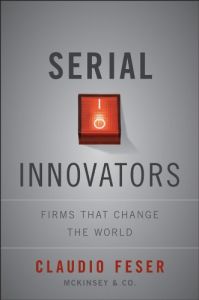Join getAbstract to access the summary!

Join getAbstract to access the summary!
Claudio Feser
Serial Innovators
Firms That Change the World
Wiley, 2011
What's inside?
Firms are like people: They’re born, they mature, they live and they die. But only a few find the fountain of youth.
Recommendation
Businesses, like people, follow a natural life cycle: They’re born, they grow, they live and they die. Only 15% of all firms reach 30 years and only 5% make it to their 50th anniversaries. Yet some organizations defy the odds, continue to produce and contribute many decades beyond an expected life span. These “serial innovators” go through a constant series of changes, perpetually reinventing and adapting themselves to shifting markets and environments. McKinsey executive Claudio Feser delves into economics, sociology, neuroscience and psychology – one chunk at a time using the connective framework of an engaging business novella. He sets out to help you understand what drives long-lived companies to outperform and outlast their competitors. Feser’s personable story of Carl Berger, a bright CEO who reshapes his firm, illustrates how leaders can apply the latest findings – explained here – in management, personnel practices, cognitive science and corporate longevity. getAbstract recommends this imaginative, wide-ranging book to executives seeking a strategy for discovering the corporate fountain of youth.
Summary
About the Author
Claudio Feser is a director of McKinsey & Company. He heads the company’s CEO Network, focusing on executive training and coaching.


















Comment on this summary
with Regards and Gratitude. P.Jaipuria, Sr Divisional Manager, LIC of India, Karimnagar.